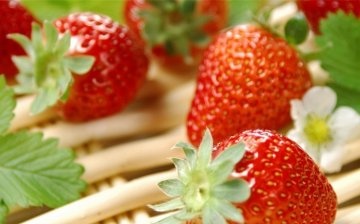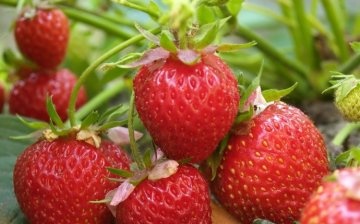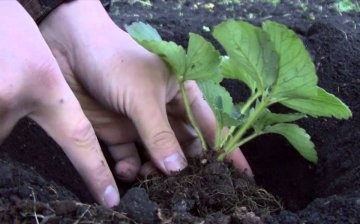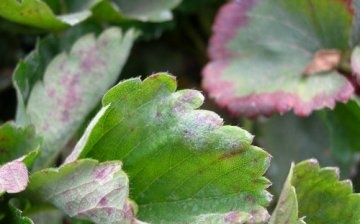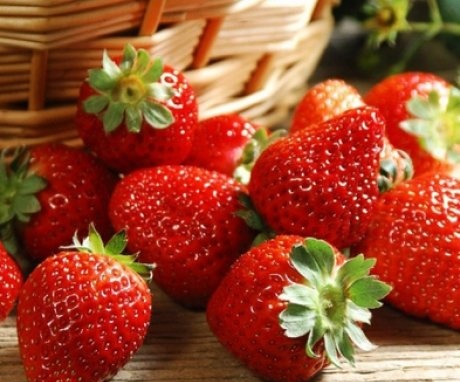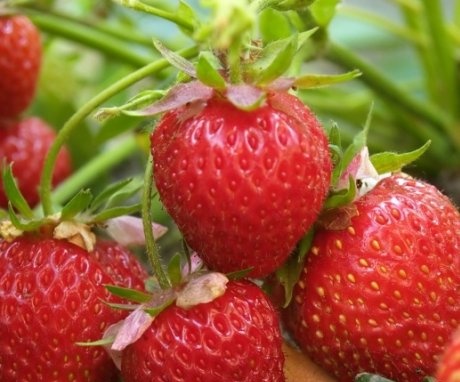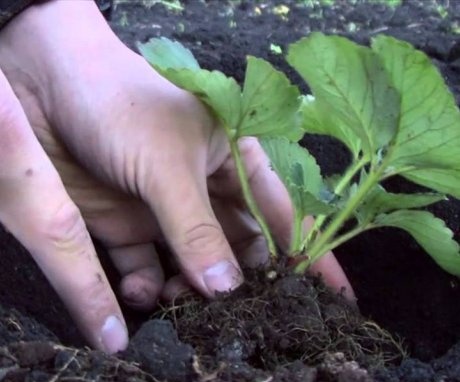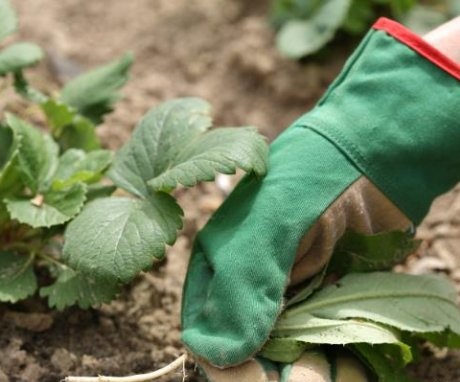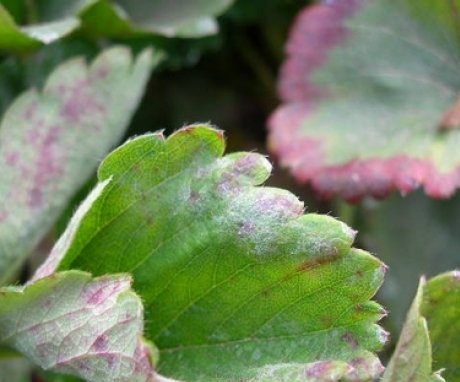Strawberry Victoria: characteristics of the variety and agricultural technology
Every gardener loves to grow berries strawberry at my site. This delicacy is not only tasty, but also healthy. Aromatic jam is made from berries and delicious desserts are prepared. And homemade ice cream with strawberries is a delicious treat for children.
Growing Victoria on a garden plot is not so difficult. It is enough to follow the agrotechnology of planting and basic rules of care. In this case, the gardener will receive a rich strawberry harvest.
Content:
- Description of Victoria and its benefits
- We create growing conditions
- Agrotechnics of planting
- Strawberry care
- Diseases and pests
Description of Victoria and its benefits
According to some reports, the name "Victoria" was given to the berry in honor of the English Queen Victoria, since it was allegedly this berry that first came to her garden. Since then, the culture has spread throughout Europe and a little later came to Russia. It is known from other sources that the variety was imported from Holland. To date, this variety is not included in the official register, since over time, absolutely all varieties of garden strawberries began to be called this name. And the term "Victoria" has become synonymous with strawberries and strawberries.
Perhaps the biggest advantage of Victoria strawberries is its unpretentiousness and large-fruited.
Excellent taste was also included in a number of advantages of the berry. Moreover, Strawberry resistant to diseases... If the plant is affected, it is due to improper agricultural technology or unfavorable climatic conditions. Gardeners prefer to grow Victoria's remontant varieties. They yield good yields and are easy to care for.
Strawberries are unpretentious, but still have several preferences for soil and place of cultivation. Compliance with them will guarantee high yields.
We create growing conditions
Choose flat, sunny areas for planting strawberries. It is desirable that the place be protected from the winds. The ideal option is an open, sunny area at the junction of the fence. That is, fencing of the site is needed on both sides, so that the beds are not blown through in winter. It's great if the site has a slight slope towards the west. The soil should not be waterlogged, strawberries do not like too damp soil.
Victoria strawberries grow well in fertile soils.
It is important not to place the plant next to pepper, tomatoes or potatoes... It will do well with legumes, sunflower or corn... Do not plant your victoria next to trees. The culture will develop very poorly. If the plant is planted in the right place, it will grow well and produce a bountiful harvest.
Agrotechnics of planting
Victoria is planted in open ground either in early spring or in the fall before winter. If a spring planting is planned, the soil must be prepared for this in the fall. Before the autumn planting, the land is prepared in a month or two. To do this, the soil is dug up, removed weeds and fertilize - humus or compost... You can also add a complex mineral fertilizers.
Many experienced gardeners advise planting Victoria in a comb. Someone recommends not philosophizing and plant strawberries as usual - in the holes.As agronomists say, the ridge is advisable on marshy soils or in the northern regions. In other cases, Victoria is planted in the grooves.
Landing rules:
- A handful of wood ash and 1 kg of compost or humus are added to the holes without fail. All components are thoroughly mixed with the ground, watered and only then the seedling is planted.
- The distance between the rows is approximately 50-60 cm, and between the seedlings up to 35 cm.
- Around young bushes, make a circle with an edge so that when watering, the water does not flow away, but remains around the plant.
- After each watering, the soil should be mulched with either cut grass or straw. The measure helps to retain moisture in the soil. This is especially true in the southern regions, where drought is a normal phenomenon.
Many people plant strawberries on film. That is, the land around the plant is covered with either agrofibre or mulch film. Berries always remain clean, and bacteria and pests there is no chance of damaging the fetuses. Mulch is also desirable because it prevents weeds from germinating. Victoria planting agrotechnology is not so difficult. The main thing is to prepare the soil, enrich it with organic matter and mineral macro- and microelements. Having planted seedlings, the gardener now faces the task of proper care.
Strawberry care
The rules for caring for Victoria include timely watering, weeding and loosening. In addition to standard procedures, strawberries require constant fertilization. She loves very much organic... Therefore, 2-3 weeks after planting, it needs to be fed with a solution mullein in a ratio of 1:10. If this is not possible, please the plant with a mineral complex with macronutrients - nitrogen, phosphorus and potassium. The second feeding is carried out during flowering and fruit ovary. The third is when the fruit is being poured.
By autumn, fertilization is stopped and the plant is given the opportunity to gain strength for the winter.
The rules of care include transplant Victoria. It is held every four years. The mother plants are dug up and transferred to a new location with fresh, enriched soil. You can replace old bushes with new ones by growing rosettes from them on antennae. It is better to breed Victoria at the age of two.
In autumn, Victoria is covered with a layer of mulch 6-8 cm high. Old leaves are not removed, as they will trap snow and protect the bush from freezing. In the spring, when the snow melts and the soil warms up, it is advisable to inspect all the Victoria bushes. Did they winter well. If a bush is frozen, it is removed. The plantation is cleaned of a layer of mulch and old, yellowed leaves are removed.
Diseases and pests
Strawberry a fairly disease-resistant plant, but in a bad summer and if the rules of care are not followed, it can be affected by some diseases. In damp and cold weather, plants suffer from various types of rot, fungal and viral diseases. Pests can appear in hot weather. Victoria's most common ailments include:
- Gray rot
- Black rot
- Spotting
- Powdery mildew
It is difficult to get rid of rot and spotting. Remove all affected fruits first. Treat the plantation with copper oxychloride or Bordeaux liquid (1%). To prevent the appearance of these misfortunes, process strawberry bushes before flowering be sure to lay a layer with these preparations and around the plants sawdust mulch or straw. Powdery mildew is disposed of using a solution prepared from colloidal sulfur in a ratio of 100 g per 10 liters of water. You can use a solution of potassium permanganate.
More information can be found in the video:
Among the pests, it is worth highlighting only those that can significantly harm the plant. It is not recommended to deal with them during the period of fruiting and flowering with the help of chemicals. Therefore, Victoria is often treated with them before flowering as a preventive measure. The most dangerous pests include:
- Strawberry mite - the plant is treated with karbofos after the last harvest. During fruiting, insecticide treatment cannot be done. Therefore, plant infusions from leaves are used. tomato or dandelion.
- Spider mite - treated with karbofos after harvesting or plant infusions from wormwood or tobacco during flowering.
- Weevil - for processing, use the drug "Iskra-M" or karbofos.
- Nematode - it is almost impossible to get rid of the nematode. Only prevention will help here - this is the treatment of seedlings before planting with disinfectant solutions. If the plant is affected by a nematode, it is removed, and the site is treated with bleach.
- Slugs and ants - slugs are collected by hand at dusk, and ants can be fought with special insecticides.
If the weather does not disappoint, the berry is properly looked after, you can not worry about the harvest. Observe agricultural technology planting and the plant will delight you with delicious and aromatic fruits. If the weather fails, there are constant rains and temperature drops, be sure to inspect the strawberries and take preventive measures. For example, spread dry mulch between rows and bushes after rains. So the chances of the appearance of diseases and pests will be less. Constant care and attention will fully reward the gardener with a generous harvest of everyone's favorite delicacy!



